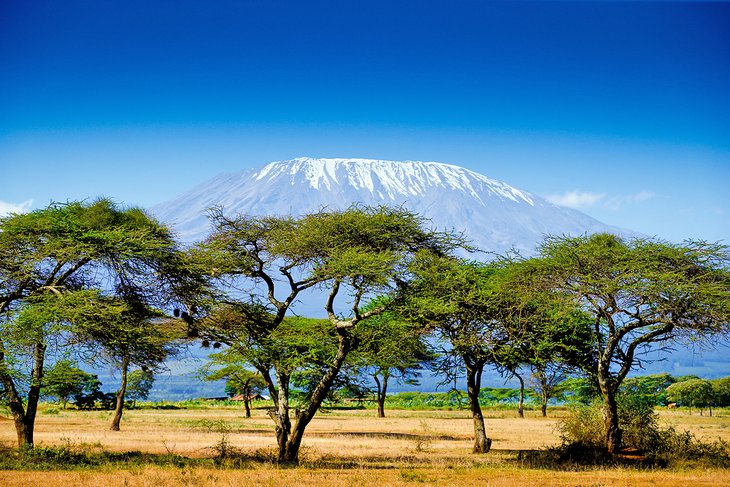
Kenya – the name is almost synonymous with the word “safari.” Few other places on the planet conjure such a spirit of adventure and romance. The diversity of things to do in Kenya dazzles all who visit, and viewing the country’s abundant wildlife tops the list.
See throngs of wildebeest thundering across the savanna during the Great Migration in the Maasai Mara; come eye-to-eye with elephants in Amboseli; or marvel at Lake Nakuru, flecked with thousands of flamingos. In these sun-soaked lands, ancient tribes, such as the Maasai, Kikuyu, and Samburu, retain their traditional customs, living in relative harmony with the natural world.
Beyond the world-famous safari parks lies a trove of coastal treasures. You can snorkel and dive fish-rich coral reefs, relax on pearly beaches, experience the melting pot of cultures and cuisines in Mombasa and Malindi, and explore tropical islands steeped in Swahili history.
Topographically, Kenya is stunning. Surrounded by calderas and mountain ranges, the Great Rift Valley divides the country. To the east of this sweeping valley, you can climb the snow-cloaked equatorial peaks of Mount Kenya and fish for trout in crystal-clear streams. Hell’s Gate National Park harbors obsidian caves and hisses with natural geysers and hot springs.
To experience the romance of Kenya’s colorful colonial history captured in the film Out of Africa, head to Nairobi. This bustling capital is the gateway to one of the world’s most evocative and exciting travel destinations. Discover more places to visit in this fascinating country with our list of the top tourist attractions in Kenya.
1. Maasai Mara National Reserve
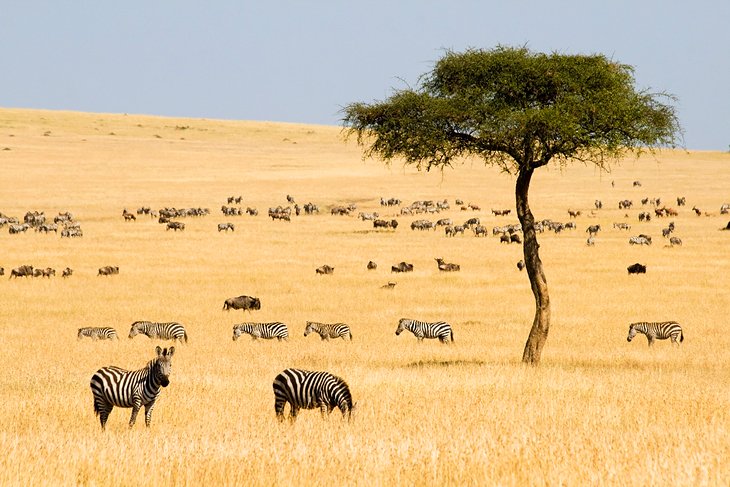
Maasai Mara National Reserve (also “Masai Mara”) is one of Africa’s most magnificent game reserves. Bordering Tanzania, the Mara is the northern extension of the Serengeti and forms a wildlife corridor between the two countries.
It’s named after the statuesque, red-cloaked Maasai people who live in the park and graze their animals here, as they have done for centuries. In their language, Mara means “mottled,” perhaps a reference to the play of light and shadow from the acacia trees and cloud-studded skies on the vast grasslands.
The park is famous for the Great Migration, when thousands of wildebeest, zebra, and Thomson’s gazelle travel to and from the Serengeti, from July through October.
In the Mara River, throngs of hippos and crocodiles lurk. The park is also known for providing excellent predator sightings, thanks to its relatively large populations of lion, cheetah, and leopard – especially in the dry months from December through February.
Thanks to the park’s altitude, the weather here is mild and gentle year-round.
2. Amboseli National Reserve
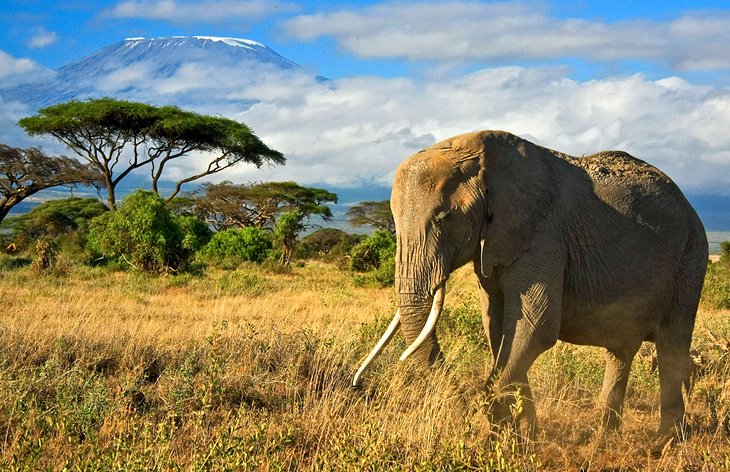
Crowned by Mount Kilimanjaro, Africa’s highest peak, Amboseli National Reserve is one of Kenya’s most popular tourist parks. The name “Amboseli” comes from a Maasai word meaning “salty dust,” an apt description for the park’s parched conditions.
The reserve is one of the best places in Africa to view large herds of elephants up close. Other wildlife commonly spotted in the park includes big cats, such as lion and cheetah, as well as giraffe, impala, eland, waterbuck, gazelle, and more than 600 species of birds.
Nature lovers can explore five different habitats here, ranging from the dried-up bed of Lake Amboseli, wetlands with sulfur springs, savannah, and woodlands. Look for the local Maasai people who live in the area around the park.
3. Tsavo National Park
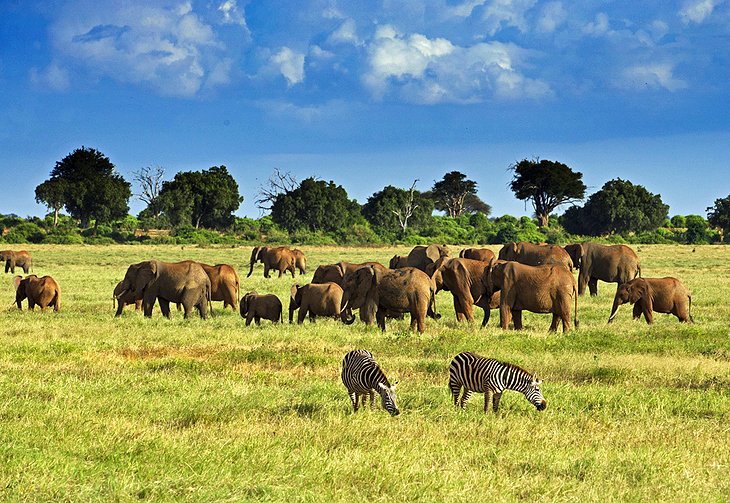
Kenya’s largest park, Tsavo, is sliced in two: Tsavo West and Tsavo East. Together these parks comprise four percent of the country’s total area and encompass rivers, waterfalls, savannah, volcanic hills, a massive lava-rock plateau, and an impressive diversity of wildlife.
Midway between Nairobi and Mombasa, Tsavo East is famous for photo-worthy sightings of large elephant herds rolling and bathing in red dust. The palm-fringed Galana River twists through the park, providing excellent game viewing and a lush counterpoint to the arid plains.
Other highlights here include the Yatta Plateau, the world’s longest lava flow; Mudanda Rock; and the Lugard Falls, which spill into rapids and crocodile-filled pools.
Tsavo West is wetter and topographically more varied, with some of the most beautiful scenery in the northern reaches of the park. Highlights here are Mzima Springs, a series of natural springs with large populations of hippos and crocodiles; Chaimu Crater, a great spot for seeing birds of prey; and Ngulia Rhino Sanctuary.
Wildlife is not as easy to see in Tsavo West because of the denser vegetation, but the beautiful scenery more than compensates.
4. Samburu, Buffalo Springs, and Shaba National Reserves
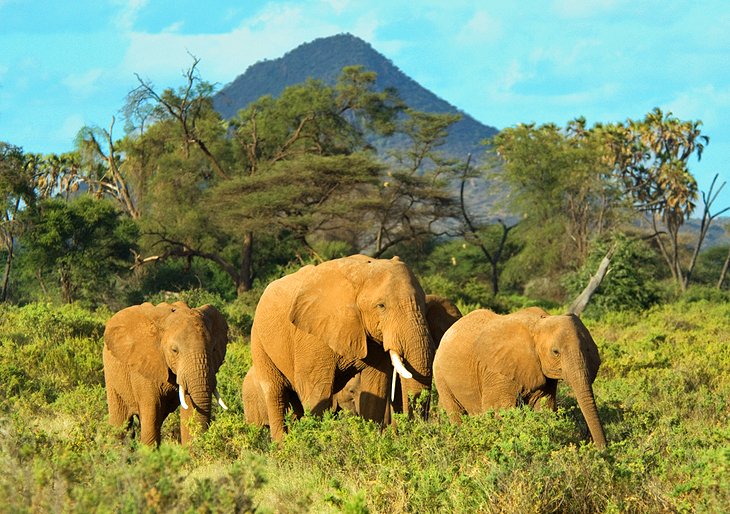
On the banks of the palm-lined Ewaso Nyiro River, Samburu, Buffalo Springs, and Shaba Reserves lie in an arid region in the remote north of Kenya.
Shaba National Reserve is one of two areas where George and Joy Adamson raised Elsa the lioness, made famous in the film Born Free.
The wildlife in all three reserves depends on the waters of the river to survive, and many species are specially adapted to the parched conditions. These include Grevy’s zebras; Somali ostriches; and gerenuks, the long-necked antelope that stand on two rear legs to reach the fresh shoots on upper tree limbs.
A top attraction in Samburu National Reserve are the Sarara Singing Wells, local watering holes where Samburu warriors sing traditional songs while hauling water for their cattle to drink. You might also be rewarded with sightings of big cats and wild dogs.
5. Lake Nakuru National Park
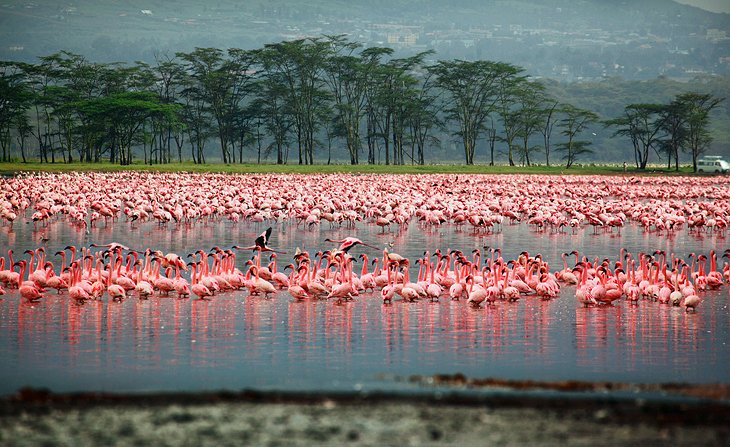
Lake Nakuru National Park, in Central Kenya, is famous for its huge flocks of pink flamingos. The birds throng on Lake Nakuru itself, one of the Rift Valley soda lakes that covers almost a third of the park’s area.
The park was established in 1961, and more than 450 species of birds have been recorded here, as well as a rich diversity of other wildlife. Lions, leopards, warthogs, waterbucks, pythons, and white rhinos are just some of the animals you might see, and the landscapes range from sweeping grasslands bordering the lake to rocky cliffs and woodland.
The park also protects the largest euphorbia candelabrum forest in Africa. These tall, branching succulents are endemic to the region and provide a bold textural element to the arid landscapes.
AUTHOR:Karen Hastings
DATE PUBLISHED: May 17, 2021
SOURCE: Planetware.com
PHOTOCREDIT: Planetware.com












